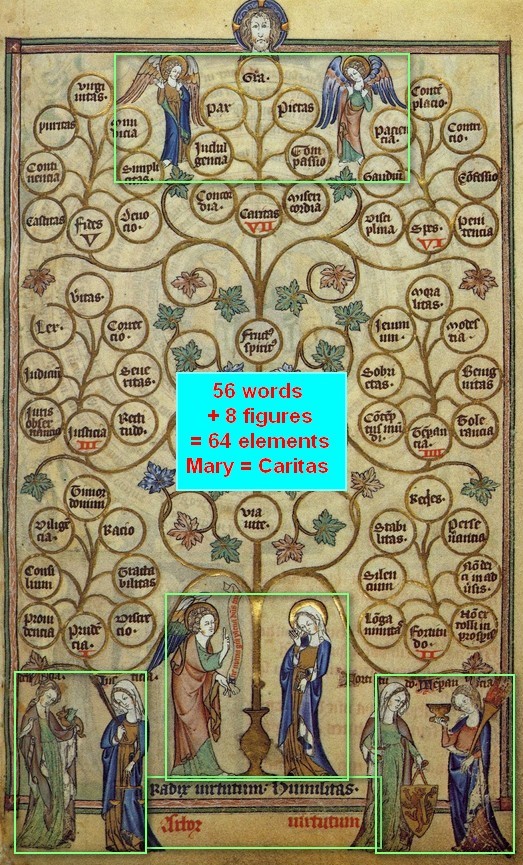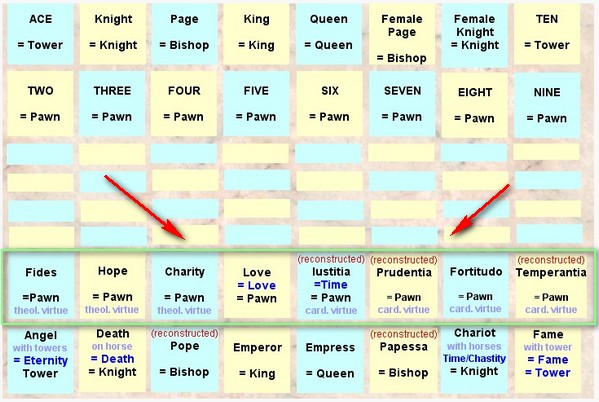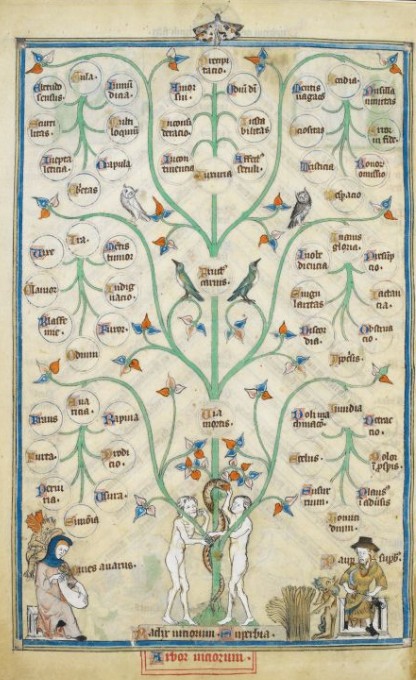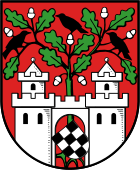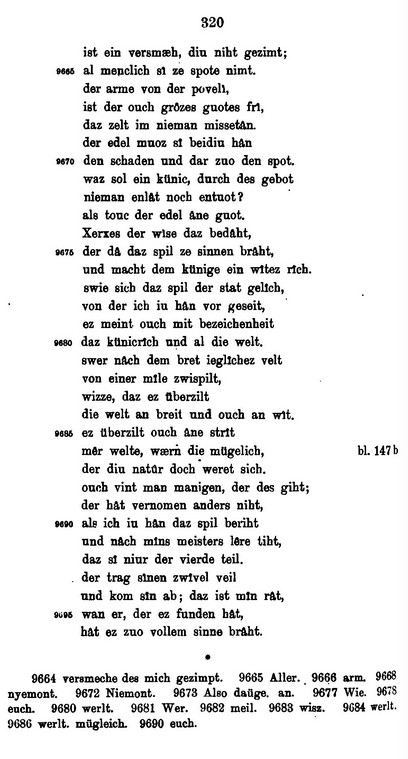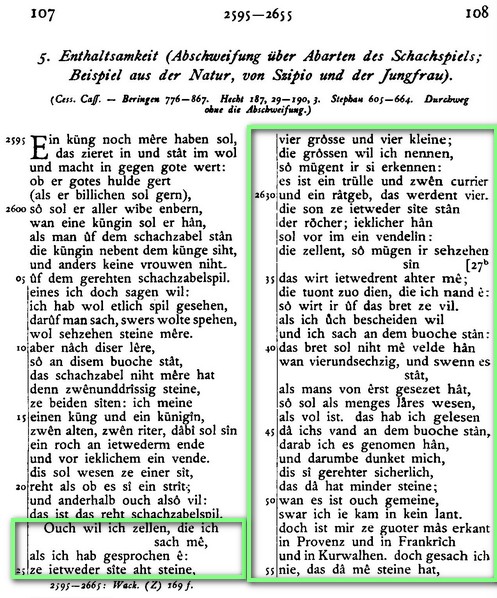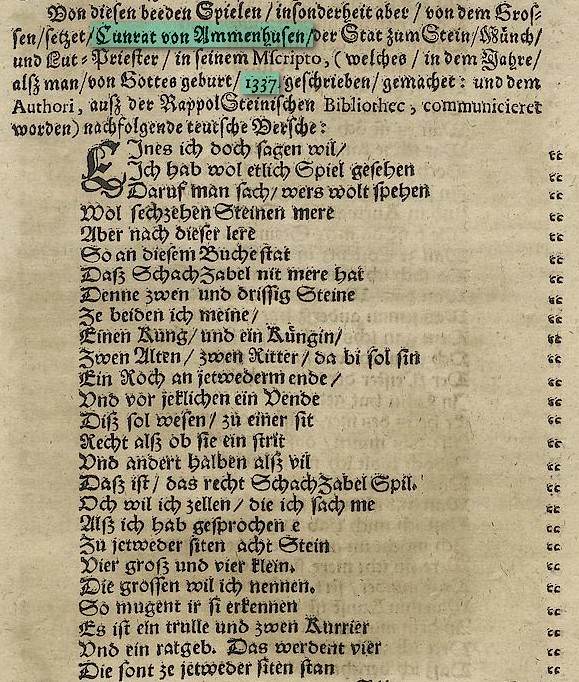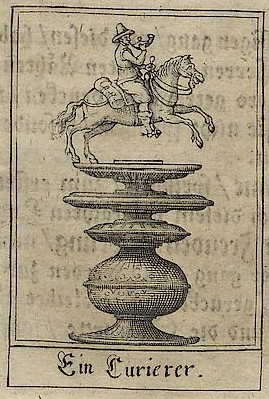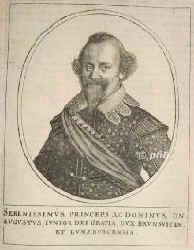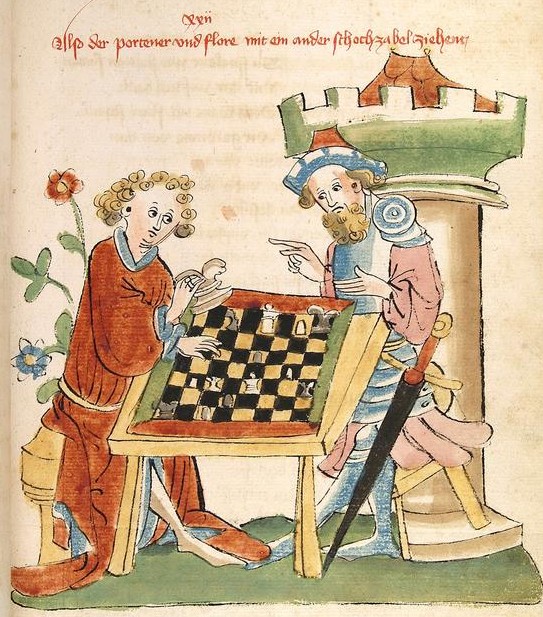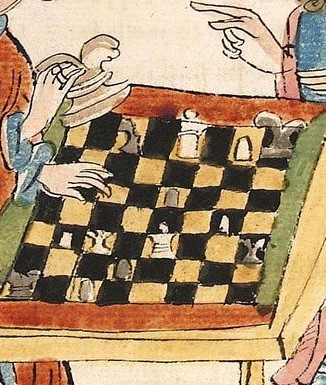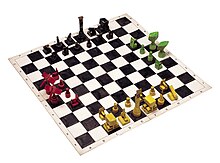Schreiber 1938 (p. 149) notes, that Capistran in Magdeburg burnt also "Currerspele" (likely Courier chess) in the year 1453. Magdeburg isn't too far from Ströbeck (maybe 60 km), the chess village, where a Courier chess survived.
I think, I haven't noted this before. As early notes about the Courier chess game are rather rare (just a handful, I would assume), this might be of some importance. Google is silent about "Currerspele".
The Schreiber text is online with snippet view.
http://books.google.de/books/about/Die_ ... edir_esc=y
Added later: Found in ...
Sächsisch Chronicon. Darinnen Ordentlich begriffẽ die Fürnemstẽ vnd denckwirdigsten Sachen, so von anbegin der Welt sich begeben, allermeist aber die in dem Römischen Reiche, vnd Sachsen ... vorgelauffen ... Auffs newe zugerichtet, gebessert, vnd mit allerley Figuren ... gezieret, vnd Continuirt biß vff den Monat Maium des Jahrs Christi, 1596
Conrad Bote, Matthaeus Dresser
M. Johan Krafft, 1596
https://books.google.de/books?id=DpFXAAAAcAAJ&pg=PA451
**********
... a little bit old-fashioned: Chess tournament Ströbeck (2013)
https://www.youtube.com/watch?v=E7zrJvKj6B4
https://www.youtube.com/watch?v=0rW8b1T3Zaw
**********
The Gustav Selenus report to Courier-chess ...
in
Shatranj oder Das schachspiel unter zweien, und dessen geheimnisse: ferner das courierspiel, rundschach des Tamerlan und das kriegesspiel. Aus den ältesten und seltensten literarischen quellen
Friedrich August Wilhelm Netto
In der Pauli'schen buchhandlung, 1827 - Chess - 212 pages
http://books.google.de/books?id=t11AAAA ... er&f=false
btw.
Gustav Selenus alias "August der Jüngere (* 10. April 1579 in Dannenberg; † 17. September 1666 in Wolfenbüttel) Herzog zu Braunschweig-Lüneburg, Fürst von Braunschweig-Wolfenbüttel" ...

... collected the Herzog August library, the largest library North of the Alps in 17th century, by enthusiasts called an 8th world wonder.
In 1615, when writing the chess book and not yet the duke, Selenus wondered, if the city shield of Aschersleben, not too far from Ströbeck, also remembered some chess history ...
http://de.wikipedia.org/wiki/Aschersleben
... and that the city Rochlitz (in "Landkreis Mittelsachsen im Freistaat Sachsen") took its name from the ches figure Rook (in old German "Roch") ...
Generally Selenus had the impression, that the relevant region around Ströbeck and even neighbor regions in more Slavic countries had a general chess dedication, more than elsewhere ... I note, that I should check the original, possibly I mix the opinions of the author of 1827 with the work of Gustavus Selenus.
After some search ...
http://digi.ub.uni-heidelberg.de/diglit ... ee07877e10
**********
Added later: I've found the passage about Magdeburg, though in modernized German:
279. Die Cardinalsbirnen zu Magdeburg.344
[230] Im Jahre Christi 1453 hat der Papst den Barfüßermönch Johann Capistran mit andern seiner Brüder mehr ins Land Böhmen gesendet. Der kam auch nach Magdeburg mit dem Erzbischof und ward von der ganzen[230] Klerisei und der Gemeinde mit Kreutzen und Fahnen prächtig empfangen, man baute ihm einen Palast auf dem Neuen Markte, davon herab er predigte. Er predigte aber Lateinisch (denn er war ein Wehle), gemeiniglich zwei oder dritthalb Stunden, und hatte einen Doctor desselben Barfüßer-Ordens, von deutscher Geburt, bei sich, der that ihm alsbald die Predigt zu deutsch nach, das verlief sich auch wohl auf zwei Stunden, so daß ihrer beiden Sermon nicht kürzer als 4 bis 5 Stunden währte. Er trieb das Gesetz mit besonderem Ernst und predigte mit solchem Ernst und Eifer, daß man ihm alle Wurftafeln, Currerspiel, Würfel, Karten, Gaukelsäcke, Larven, sammt anderen Spielgeräthen, und die Frauen ihre Schnüre und Haare, die sie pflegen vorzubinden, und ihre Bretter, darauf sie ihre Schleier und Tücher zu kleistern oder anzustärken pflegen, brachten, und verbrannten sie auf dem Neumarkt öffentlich. Dieser Capistran soll zu Magdeburg einstmals sehr gute wohlschmeckende Birnen gegessen und dieselben gesegnet oder geweiht haben, daher sie Cardinalsbirnen geheißen wurden, welchen Namen sie noch heute zu Magdeburg haben.
Nach Pomarius F.T. ij. (verso).
http://www.zeno.org/Literatur/M/Gr%C3%A ... +Magdeburg
taken from
Johann Georg Theodor Grässe: Sagenbuch des Preußischen Staates 1–2, Band 1, Glogau 1868/71, S. 230-231
The Grässe text is here ...
http://books.google.de/books?id=42oaAAA ... an&f=false
I searched for the source "F.T. Pomarius", and found Johann Baumgart (in latin Pomarius) and "Summarischer Begriff Der Magdeburgische[n] Stadt Chronicken...: Darinne angezeigt wird, wenn dieselbige Stadt ohngefehr zu bawen an gefangen" from the year 1587.
http://books.google.de/books?id=pOJSAAA ... navlinks_s
See for the year 1453 ....
This source writes "Currerspiel" and not "Currerspele", which Schreiber explicitely wrote in this way. So likely Schreiber had another source, possibly the closer document.
